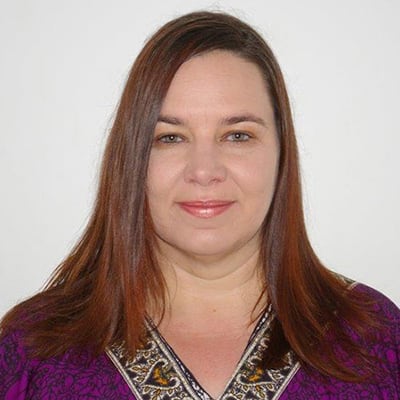S&P Global Offerings
Featured Topics
Featured Products
Events
S&P Global Offerings
Featured Topics
Featured Products
Events
S&P Global Offerings
Featured Topics
Featured Products
Events
S&P Global Offerings
Featured Topics
Featured Products
Events
Language
Featured Products
Ratings & Benchmarks
By Topic
Market Insights
About S&P Global
Corporate Responsibility
Diversity, Equity, & Inclusion
Featured Products
Ratings & Benchmarks
By Topic
Market Insights
About S&P Global
Corporate Responsibility
Diversity, Equity, & Inclusion

Volume 7 – 16 October 2024
Emerging markets are strategically positioned to drive global economic growth through the expansion of their domestic markets and to benefit from the reconfiguration of supply chains, trade and investment.
In this latest Look Forward report, Emerging Markets: A Decisive Decade, our authors explore the factors and trends that will shape these vibrant economies. Our inaugural edition focused on emerging markets presents deep data and analysis that highlight how supportive demographics, abundant natural resources, evolving trade dynamics, and technological innovations in energy and manufacturing could propel the development of these markets. However, a global landscape characterized by geopolitical disruption, climate change, and limits to frictionless trade and globalization presents complex challenges.
This research provides essential intelligence for decision-makers looking beyond the near term. With a view to the longer horizon, we provide a framework to explore the diverse characteristics across emerging markets while also assessing the critical factors — market structure, institutional quality and infrastructure efficiency — that will impact their ability to navigate these complex challenges and harness their economic potential. We examine which emerging markets are set to climb the income ladder and how productivity growth will be essential to unlocking faster development.
Demographic changes and stresses from climate impacts will place upward pressure on government debt. Even so, improved external positions, higher reserve buffers and increased monetary effectiveness have made emerging markets less vulnerable to financial shocks. Population growth, urbanization and economic expansion will increase demand for electricity. Upskilling the labor force, improving infrastructure and competing with advanced economies in new technologies such as robotics and AI will determine emerging markets’ longer-term competitiveness. Among the many critical questions that must be considered are how these countries will approach the multidimensional transition, including their efforts to decarbonize their markets, their vulnerability to climate risk and their financing needs for climate change action and mitigation.
We hope these articles initiate a constructive dialogue about the future of emerging economies, and we look forward to discussing these topics further and hearing your own insights.

S&P Global Ratings
President, S&P Global Ratings
The Emerging Markets Research Lab, launched in February 2024, brings together experts from all divisions and functions of S&P Global to uncover the unique insights and trends shaping emerging markets today and in the future. The Lab seeks to foster collaboration and debate on the strategic opportunities and risks for emerging markets, aiming to generate high-value thought leadership across S&P Global. Throughout 2024, our focus has been on the following key areas:

S&P Global Ratings
President, S&P Global Ratings

S&P Global Ratings
Global Head of Research & Development

S&P Global Market Intelligence
Vice President, Global Intelligence and Analytics

S&P Global Ratings
Managing Director, Head of Credit Research, Emerging Markets

S&P Global Market Intelligence
Executive Director, Head of Latin American Insights and Analysis

S&P Global Ratings
Head of Climate Economics & European Economist

S&P Global Ratings
Senior Analyst

S&P Global Commodity Insights
Lead Advisor and Regional Head for Africa and Levant, CI Consulting & CERAWeek

S&P Global Ratings
Global Head Multilateral Lending Institutions

S&P Global Market Intelligence
Head of Sub-Saharan Africa Insights and Analysis

S&P Global Commodity Insights
Senior Director, Global Power and Renewables

S&P Global Ratings
Managing Director

S&P Global Market Intelligence
Head of Middle East and North Africa Country Risk

S&P Global Market Intelligence
Head of Asia-Pacific Country Risk and Co-Lead, India Research Chapter

S&P Global Commodity Insights
Director

S&P Global Market Intelligence
Senior Analyst, Supply Chain

S&P Global Ratings
Emerging Markets Chief Economist

S&P Global Market Intelligence
Principal Analyst, Models and Scenarios Team

S&P Global Market Intelligence
Head of Supply Chain Research

S&P Global Ratings
Global Head of Sovereign & MLI Ratings
Lead Editors
Beth Donovan, Senior Editor
Michael Lustig, Senior Lead Editor
Project Manager
Meha Dave, Associate, Project Execution Lead, New Product & Analytical Innovation
Production Manager
Carla Donaghey, Senior Designer
Copy Editor
Mary Brown, Editor
Head of Editorial, Design & Publishing Team
Ken Fredman
Content Strategy
Nathan Hunt, Head of Content and Digital Marketing
Kyle May, Enterprise Content Marketing Lead
Communications
May Kek, Communications Director, APAC, Corporate Communications
Christopher Krantz, Global Head of Communications, Ratings and S1 Corporate Communications
Graphics Editor
Matthew Schick, Senior Editor, Visuals
Website Development
Kurt Burger, Marketing Specialist
Social Outreach
Camille McManus, Marketing Specialist
Designer
Lance Meneley, Senior Designer
Glossary
We have selected a list of key terms used throughout this Look Forward Journal. We offer these definitions to provide readers with a clear understanding about the scope of each concept, which can vary across different research outlets.
Emerging markets: For the purpose of the articles of this Look Forward Journal, S&P Global defines “emerging markets” as countries that have been or are transitioning toward middle-income levels, with good access to global capital markets (including sovereign and domestic corporations and financial institutions), deepening domestic capital markets, and global economic relevance based on economic size, population and share in global trade. In our article series, we focus on Argentina, Brazil, Chile, China, Colombia, Hungary, India, Indonesia, Malaysia, Mexico, Peru, the Philippines, Poland, Saudi Arabia, South Africa, Thailand, Türkiye and Vietnam. Some articles include additional countries within the scope of our definition to emphasize our arguments or to present the reader with additional examples that support our insights.
Frontier markets: S&P Global defines “frontier markets” as countries with per capita income below $2,500 GDP. These countries face economic challenges and financing needs. They rely on international institutions, including the International Monetary Fund’s Poverty Reduction and Growth Trust, for vital policy and financial support. They have shallow and narrow domestic capital markets that are often underdeveloped. These economies are also characterized by political instability, inadequate regulation, substandard financial reporting, weak liquidity and large currency fluctuations. Their economies are often concentrated in very few sectors or commodities.
In our article Multilateral lending institutions and private sector capital mobilization for climate action and development, we use additional definitions to classify countries. This is because multilateral institutions use country income classifications in their underwriting criteria. The income classification definitions below are fully aligned with World Bank guidance, which is updated regularly. Countries classified within the lower-income, lower-middle-income and upper-middle-income categories can also be classified within our frontier or emerging markets thresholds.
Low-income countries: Countries with gross national income (GNI) per capita equal to or below $1,135.
Lower-middle-income countries: Countries with GNI per capita between $1,136 and $4,465.
Upper-middle-income countries: Countries with GNI per capita between $4,466 and $13,845.
High-income countries: Countries with GNI per capita above $13,845.
For more details and updates on these definitions, please refer to the World Bank Group country classifications by income level.
SSP3-7.0: A moderate- to high-emissions scenario, akin to a slow transition, in which countries increasingly focus on domestic or regional issues, with slower economic development and lower population growth. A low international priority for addressing environmental concerns leads to rapid environmental degradation in some regions. This SSP projects a global temperature increase of 2.1 degrees C (1.7 degrees C-2.6 degrees C) by 2050 or 3.6 degrees C (2.8 degrees C-4.6 degrees C) by the end of the century.
Energy transition financing gap: In our articles, we discuss a financing gap that refers to the resources needed to achieve each country’s energy transition objectives. Such objectives could be defined by domestic state policy guidelines or fully aligned with the UN’s sustainable development goals. In most cases, the amounts needed to achieve sustainable goals are significant and difficult to finance, leading to a financing gap.
EU Corporate Sustainability Due Diligence Directive (CS3D): This directive was approved by the Council of the European Union on May 24, 2024. It stipulates that EU-based companies and non-EU companies operating in the European single market with more than 1,000 employees and global revenue exceeding €450 million are legally bound to ensure that their supply chains neither harm the environment nor violate human and labor rights. Implementation will occur in stages between 2027 and 2029, based on company size.
Strategic Opportunity Index™ (SOI™): The Strategic Opportunity Index™ measures the state of a market and its potential to generate opportunity for enterprise, encompassing a range of factors. The SOI™ draws on market-level data for over 90 markets, covering more than 98% of global GDP. The aggregate scores and ranks of each market and the state of the macro environment have been constructed on an annual frequency since 2014. The data provides users with current and historical telemetry on the economic, regulatory, policy, institutional, logistics, supply chain, trade and resource questions through normalized data.
The SOI™ Momentum Score measures how the markets have changed over the past 10 years from the perspective of the index. Momentum scores are calculated from compound annual growth rates and normalized to provide a comparable score that focuses on the trajectory of the country, regardless of the current SOI™ ranking. Markets with the most improvement rank highest on momentum scores. This approach helps users understand and identify markets where opportunities are expanding.
The SOI™ Policy Favorability Score measures the extent to which government policies, regulations and tax code support and encourage new enterprise.
The SOI™ Institutional Quality Score measures the strength and effectiveness of a country’s institutions, such as legal and financial institutions.
The SOI™ Logistics Efficiency Score measures the effectiveness and reliability of a country’s logistics and supply chain infrastructure.
The SOI™ Market Potential Score measures the extent to which the domestic market is open, innovative and attractive for new business opportunities.
The SOI™ Resource Availability Score measures the accessibility and adequacy of the necessary resources for conducting business operations in a given market, specifically labor and capital.